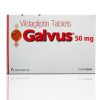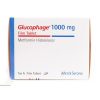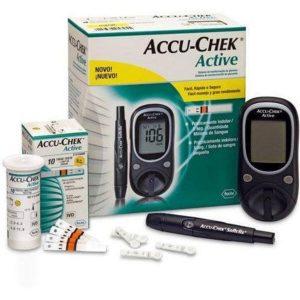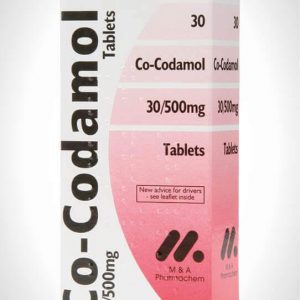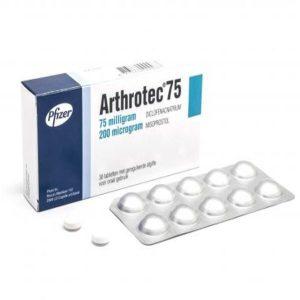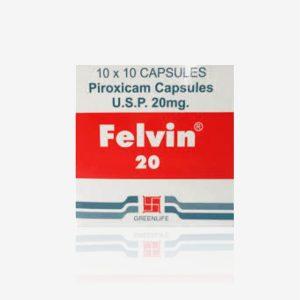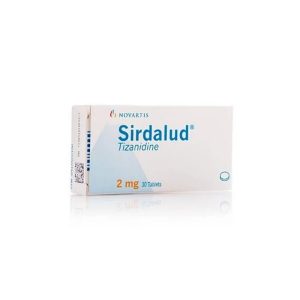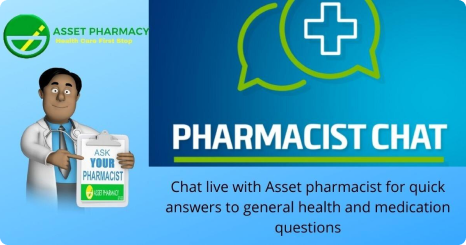Description
Galvus 50mg Tablets, 28 Tablets
Galvus 50mg tablets are a prescription medication used to treat type 2 diabetes. The active ingredient, vildagliptin, helps to control blood sugar levels when diet and exercise alone aren\’t enough. Galvus may be prescribed alone or in combination with other antidiabetic medicines, making it an effective treatment option for many people with diabetes.
What is Galvus 50mg Tablets used for?
Galvus is used to treat type-2 diabetes mellitus. It can be used in the following ways:
- on its own (monotherapy) in patients whose diabetes is not sufficiently controlled by diet and exercise and who cannot take metformin;
- together with metformin, a thiazolidinedione or a sulphonylurea (dual therapy) when the patient’s diabetes is insufficiently controlled by this other medicine taken alone, but it is only used in combination with a sulphonylurea in patients who cannot take metformin;
- together with a sulphonylurea and metformin (triple therapy) in patients whose diabetes is not sufficiently controlled by these medicines plus diet and exercise;
- together with insulin (with or without metformin) in patients whose diabetes is not sufficiently controlled by diet and exercise plus a stable dose of insulin.
How Galvus works
Galvus works by making the pancreas produce more insulin and less glucagon. This helps to control the blood sugar level. This medicine has been shown to reduce blood sugar, which may help to prevent complications from your diabetes. Even though you are now starting a medicine for your diabetes, it is important that you continue to follow the diet and/or exercise which has been recommended for you
What is type 2 diabetes?
Type 2 diabetes is a condition in which your body does not make enough insulin, and the insulin that your body produces does not work as well as it should. Your body can also make too much sugar. When this happens, sugar (glucose) builds up in the blood. This can lead to serious medical problems like heart disease, kidney disease, blindness, and amputation.
- Type 2 diabetes is a common condition that causes the level of sugar (glucose) in the blood to become too high.
- It can cause symptoms like excessive thirst, needing to pee a lot and tiredness. It can also increase your risk of getting serious problems with your eyes, heart and nerves.
- It\’s a lifelong condition that can affect your everyday life. You may need to change your diet, take medicines and have regular check-ups.
- It\’s caused by problems with a chemical in the body (hormone) called insulin. It\’s often linked to being overweight or inactive, or having a family history of type 2 diabetes.
Symptoms of Type 2 Diabetes
Many people have type 2 diabetes without realising. This is because symptoms don\’t necessarily make you feel unwell.
Symptoms of type 2 diabetes include:
- peeing more than usual, particularly at night
- feeling thirsty all the time
- feeling very tired
- losing weight without trying to
- itching around your penis or vagina, or repeatedly getting thrush
- cuts or wounds taking longer to heal
- blurred vision
You\’re more at risk of developing type 2 diabetes if you:
- are over 40 – or 25 for south Asian people
- have a close relative with diabetes – such as a parent, brother or sister
- are overweight or obese
- are of south Asian, Chinese, African Caribbean or black African origin – even if you were born in the UK
Understanding your type 2 diabetes medication
Most people need medicine to control their type 2 diabetes.
The medicine helps keep your blood sugar level as normal as possible to prevent health problems. You\’ll have to take it for the rest of your life.
Diabetes usually gets worse over time, so your medicine or dose may need to change.
Adjusting your diet and being active is also necessary to keep your blood sugar level down.
How to manage your diabetes
A healthy diet and keeping active will help you manage your blood sugar level. It will also help you to control your weight and generally feel better.
Galvus 50mg Tablets Reviews
After using Galvus 50mg Tablets, it\’s helpful to let others know about your experience. Reviews of an item help other users know that medicines received have helped the condition it is claimed for, how well the treatment worked or any issues to be aware of. We invite our users to leave a review of both their treatment and of the service provided. Click on the reviews tab to see if there has been feedback on this item.
What is the price of Galvus 50mg Tablets in Nigeria?
The price of Galvus 50mg Tablets is N7,623
Where can you buy Galvus 50mg Tablets In Nigeria?
Galvus 50mg Tablets is available on Asset Pharmacy Lagos Nigeria, Nigeria\’s Largest Online Pharmacy
Galvus 50mg Tablets is a prescription drug that legally requires a medical prescription to be dispensed.
To order this product you confirm that you are under the care of your doctor or consultant and have been given permission by them for purchase, fulfillment & use in treatment with their written consent.
How to Use
How to use Galvus 50mg Tablets
How to take Galvus
Always take this medicine exactly as your doctor has told you.
Check with your doctor or pharmacist if you are not sure. How much to take and when The amount of Galvus people have to take varies depending on their condition. Your doctor will tell you exactly how many tablets of Galvus to take. The maximum daily dose is 100 mg. The usual dose of Galvus is either: • 50 mg daily taken as one dose in the morning if you are taking Galvus with another medicine called a sulphonylurea. • 100 mg daily taken as 50 mg in the morning and 50 mg in the evening if you are taking Galvus alone, with another medicine called metformin or a glitazone, with a combination of metformin and a sulphonylurea, or with insulin. • 50 mg daily in the morning if you have moderate or severe kidney disease or if you are on dialysis. How to take Galvus • Swallow the tablets whole with some water. How long to take Galvus • Take Galvus every day for as long as your doctor tells you. You may have to take this treatment over a long period of time. • Your doctor will regularly monitor your condition to check that the treatment is having the desired effect. If you take more Galvus than you should If you take too many Galvus tablets, or if someone else has taken your medicine, talk to your doctor straight away. Medical attention may be needed. If you need to see a doctor or go to the hospital, take the pack with you. If you forget to take Galvus If you forget to take a dose of this medicine, take it as soon as you remember. Then take your next dose at the usual time. If it is almost time for your next dose, skip the dose you missed. Do not take a double dose to make up for a forgotten tablet. If you stop taking Galvus Do not stop taking Galvus unless your doctor tells you to. If you have questions about how long to take this medicine, talk to your doctor.
Product Details
Product Information of Galvus 50mg Tablets
What you need to know before you take Galvus
Do not take Galvus: • if you are allergic to vildagliptin or any of the other ingredients of this medicine (listed in section 6). If you think you may be allergic to vildagliptin or any of the other ingredients of Galvus, do not take this medicine and talk to your doctor. 2 Warnings and precautions Talk to your doctor, pharmacist or nurse before taking Galvus • if you have type 1 diabetes (i.e. your body does not produce insulin) or if you have a condition called diabetic ketoacidosis. • if you are taking an anti-diabetic medicine known as a sulphonylurea (your doctor may want to reduce your dose of the sulphonylurea when you take it together with Galvus in order to avoid low blood glucose [hypoglycaemia]). • if you have moderate or severe kidney disease (you will need to take a lower dose of Galvus). • if you are on dialysis. • if you have liver disease. • if you suffer from heart failure. • if you have or have had a disease of the pancreas. If you have previously taken vildagliptin but had to stop taking it because of liver disease, you should not take this medicine. Diabetic skin lesions are a common complication of diabetes. You are advised to follow the recommendations for skin and foot care that you are given by your doctor or nurse. You are also advised to pay particular attention to new onset of blisters or ulcers while taking Galvus. Should these occur, you should promptly consult your doctor. A test to determine your liver function will be performed before the start of Galvus treatment, at threemonth intervals for the first year and periodically thereafter. This is so that signs of increased liver enzymes can be detected as early as possible. Children and adolescents The use of Galvus in children and adolescents up to 18 years of age is not recommended. Other medicines and Galvus Tell your doctor or pharmacist if you are taking, have recently taken or might take any other medicines. Your doctor may wish to alter your dose of Galvus if you are taking other medicines such as: – thiazides or other diuretics (also called water tablets) – corticosteroids (generally used to treat inflammation) – thyroid medicines – certain medicines affecting the nervous system. Pregnancy and breast-feeding If you are pregnant or breast-feeding, think you may be pregnant or are planning to have a baby, ask your doctor or pharmacist for advice before taking this medicine. You should not use Galvus during pregnancy. It is not known if Galvus passes into breast milk. You should not use Galvus if you are breast-feeding or plan to breast-feed. Driving and using machines If you feel dizzy while taking Galvus, do not drive or use machines. Galvus contains lactose Galvus contains lactose (milk sugar). If you have been told by your doctor that you have an intolerance to some sugars, contact your doctor before taking this medicine. Galvus contains sodium This medicine contains less than 1 mmol sodium (23 mg) per tablet, that is to say essentially ‘sodium
Side Effects
Side Effects of Galvus 50mg Tablets
Possible side effects
Like all medicines, this medicine can cause side effects, although not everybody gets them. Some symptoms need immediate medical attention: You should stop taking Galvus and see your doctor immediately if you experience the following side 4 effects: • Angioedema (rare: may affect up to 1 in 1,000 people): Symptoms include swollen face, tongue or throat, difficulty swallowing, difficulties breathing, sudden onset rash or hives, which may indicate a reaction called “angioedema”. • Liver disease (hepatitis) (rare): Symptoms include yellow skin and eyes, nausea, loss of appetite or dark-coloured urine, which may indicate liver disease (hepatitis). • Inflammation of the pancreas (pancreatitis) (frequency not known): Symptoms include severe and persistent pain in the abdomen (stomach area), which might reach through to your back, as well as nausea and vomiting. Other side effects Some patients have had the following side effects while taking Galvus and metformin: • Common (may affect up to 1 in 10 people): Trembling, headache, dizziness, nausea, low blood glucose • Uncommon (may affect up to 1 in 100 people): Tiredness Some patients have had the following side effects while taking Galvus and a sulphonylurea: • Common: Trembling, headache, dizziness, weakness, low blood glucose • Uncommon: Constipation • Very rare (may affect up to 1 in 10,000 people): Sore throat, runny nose Some patients have had the following side effects while taking Galvus and a glitazone: • Common: Weight increase, swollen hands, ankle or feet (oedema) • Uncommon: Headache, weakness, low blood glucose Some patients have had the following side effects while taking Galvus alone: • Common: Dizziness • Uncommon: Headache, constipation, swollen hands, ankle or feet (oedema), joint pain, low blood glucose • Very rare: Sore throat, runny nose, fever Some patients have had the following side effects while taking Galvus, metformin and a sulphonylurea: • Common: Dizziness, tremor, weakness, low blood glucose, excessive sweating Some patients have had the following side effects while taking Galvus and insulin (with or without metformin): • Common: Headache, chills, nausea (feeling sick), low blood glucose, heartburn • Uncommon: Diarrhoea, flatulence Since this product has been marketed, the following side effects have also been reported: • Frequency not known (cannot be estimated from the available data): Itchy rash, inflammation of the pancreas, localised peeling of skin or blisters, muscle pain Reporting of side effects If you get any side effects, talk to your doctor, pharmacist or nurse. This includes any possible side effects not listed in this leaflet.
Ingredients
Product Ingredients of Galvus 50mg Tablets
What Galvus contains
• The active substance is vildagliptin.
Each tablet contains 50 mg vildagliptin.
• The other ingredients are lactose anhydrous, microcrystalline cellulose, sodium starch glycolate (type A) and magnesium stearate
How to store
How to store Galvus 50mg Tablets
Keep this medicine out of the sight and reach of children.
• Do not use this medicine after the expiry date which is stated on the blister and the carton after
“EXP”. The expiry date refers to the last day of that month.
• Store in the original package in order to protect from moisture.
• Do not use any Galvus pack that is damaged or shows signs of tampering.
Prescription Product
This product requires a prescription from your Doctor.
Please follow the instruction received from the pharmacy on how to forward your prescription to the pharmacy after you have paid for the medicine.
A prescription drug is a pharmaceutical medication that legally requires a medical prescription to be dispensed.
To order this product you confirm that you are under the care of your doctor or consultant and have been given permission by them for purchase, fulfillment & use in treatment with their written consent
Delivery
Delievry time are estimates. Can vary due to the time of day you order.
Delivery time estimate are subject to the courier company.
Shipping to Lagos cost starts from N1850 Next day delivery
Shipping to Rest Of Nigeria – 2-3 days cost starts from N2000
Shipping to Rest of Africa – 5-7 working days Cost starts from N12000
Shipping to Europe 7 – 14 working days Cost srats from N18000
Shipping to Rest of the world – 7 – 14 days Cost starts from N18000




